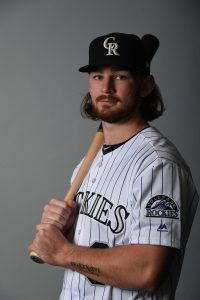Diamondbacks right-hander Taijuan Walker has been diagnosed with a sprained shoulder capsule, manager Torey Lovullo told reporters including MLB.com’s Steve Gilbert (links to Twitter). He’ll be shut down from throwing for at least six weeks.
Fortunately, there was better news for veteran starter Zack Greinke, who also went in for an MRI. He’s said to have a clean bill of health. Greinke, who left his most recent start with abdominal tightness, will throw a bullpen session tomorrow and may avoid a trip to the injured list altogether.
Though the outlook could have been much worse for Walker, this new issue could make it tough for him to return to the MLB mound this year. The 26-year-old was making progress in his rehabilitation process after undergoing Tommy John surgery last year.
Now, the medical staff will be monitoring this new issue — which isn’t the first shoulder problem in Walker’s career — in addition to his elbow. He’ll need to fully restart his throwing program once he’s deemed ready, which will push his timeline back quite a bit even if he’s able to clear the remaining hurdles without any major setbacks.

